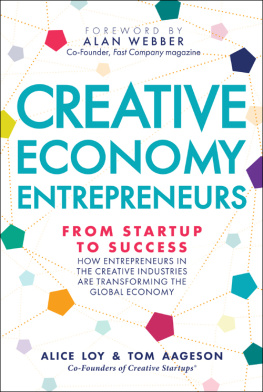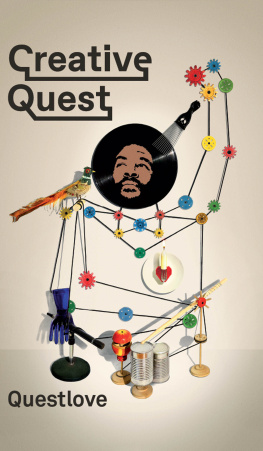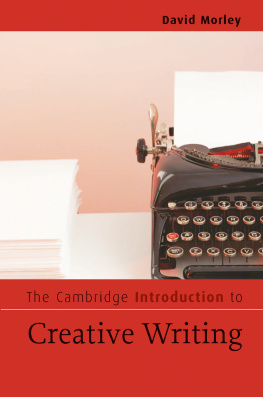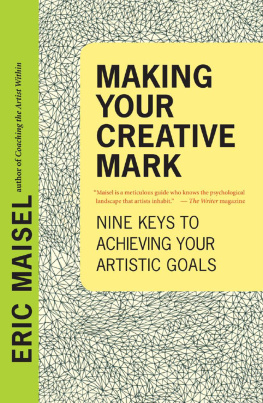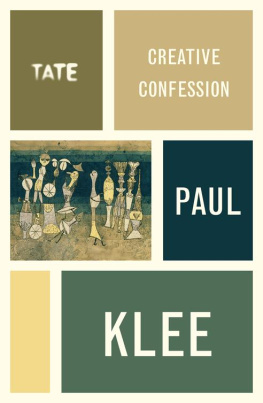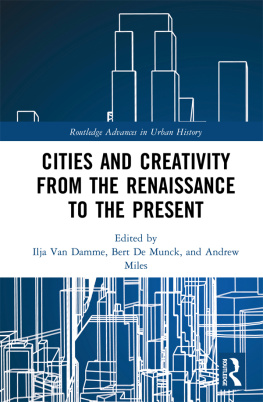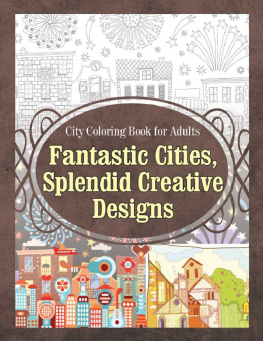Chapter 1
The creative and cultural economy in cities
Since the demise of Fordism, immaterial value has been recognized as a central element for economic growth in Western societies, which has brought about changes in the organization of work, (de-routinized production and relatively open-ended working practices) as well as in the leading urban economic sectors (Scott, 2008a). This focus on the immaterial value has brought a renewed interest on cities as spaces for economic growth (OConnor, 2004): in the last twenty years we are witnesses of a long and intricate process that can be broadly sketched with the following pattern composed by three levels.
Firstly, the heavy production left cities. By 1960s products were standardized, production routinized and decomposed into simple operations performed by product-specific or dedicated machines operated by semi-skilled workers. In the early 1970s as international competition increased and world market fragmented, firms became more and more cautious of long-term investments in product-specific machinery, as the market often disappeared before the machinerys costs were recovered. The more unpredictable and unstable the market became, the more flexibility in production was required. Large plants were not able anymore to fulfil consumers needs and to follow the countless market niches, and therefore a new model arose, that of flexible production in small, differentiated, dislocated firms (Sabel, 1994).
Secondly, a general change in the consumption behaviour opened, or widened, the market for cultural goods. People have been changing their consumption style looking for distinctive, symbolic, cultural goods. There has been an increasing aestethicization of contemporary daily life, which pushes consumers to look for symbolic and aesthetic goods (Lash and Urry, 1994). Tastes evolve towards a search of culture-based goods, and more available time is used to consume cultural goods, to enjoy cultural events, to go shopping or to travel.
Finally, and this is the third process, the production of particular goods did not leave cities, because it had always profited from the urban atmosphere (Hall, 1998): the creative industry, or cultural, as many authors refer to it, remained within the urban borders, enjoying the cultural feeling distinctive of cities. Indeed, the city has been always considered the preferred site for the production of culture. From the Renaissance to the avant-garde artistic movements, the urban experience has been massively important for art, and in general, cultural production. The city is connected with culture in at least three facets. It is firstly a place where art is concentrated in buildings, art works and public spaces (e.g. Florence, Athens, Paris, Salzburg and so on). Secondly, people mostly consume culture in cities, and, finally, city is the place where diversities, migrants, artistic movements, museums, and in general cultural institutions, converge and come in contact (Featherstone, 1991).
As a major consequence of these transformations, we observe that culture and economy are more and more intertwined: culture is progressively commodified, while commodities take up more and more symbolic meanings. Art expositions, museums, as well as advertising industry, design-related activities, publishing and fashion are leading sectors in the urban economy, replacing, both symbolically and practically, the heavy industry of the Fordist period.
The increasing interest on cities as spaces of production and consumption has spawned considerable literature which tries to conceptualize the emergence of these new economic patterns in cities and metropolitan regions.
1 Post-Fordism
The transformation of the society since the late 20 th Century, has been named post-Fordism by many authors who focused their attention on the changes in the economic system (both production and consumption) and in the society as a whole. Concisely, sociologists identified the new system as divergent from the previous one, named Fordism that was characterized by mass production of goods and services directed to a mass market. Changes in the production world have consequences in all sectors of society, in an intertwined way, from which is not possible to draw causal links. Obviously, analyses about post-Fordism touch many different aspects of the transformation of the society, of which we want here to highlight just a few.
In the early 1970s, thanks mostly to the increasing international competition and world market fragmentation, the market became more volatile, the demand more differentiated and consumers interest in products quickly decreased well before machinerys costs were recovered.
Inevitably affected by the globalization processes, by the internationalization of the market, by the growing of the international competition and the flexibilization of the demand for goods, many large-scale mass production firms started to suffer a crisis mostly because their machinery became old very soon. The differentiation of the demand is one of the key variables in the analysis of the post-Fordism (Kumar, 1995): while a Fordism organization of production was based on mass scale, cheap and standardized goods, in the new kind of organization, production tends to be more differentiated and on a smaller scale. This novel pattern of production and consumption has been named flexible specialization (Piore and Sabel, 1984). Flexible specialization depends primarily on new information technologies, which allow for speedy changes of the output, eventually satisfying rapid changes in the demand side. Flexible technology therefore makes flexible specialization possible. The rise of flexible specialization and its diffusion is noted as responsible for the growth of a different organization of production: as large firms were less adaptable and more rigid to adjust themselves to the many little changes which the market requires, small firms were more suitable for the new flexible production.
Flexible demand required a more flexible production, therefore, in order to be competitive, firms experimented new flexible forms of organization, which allowed for rapid shift in output.
As a consequence, also the relation between the economy and the space has deeply changed. The main, visible effect was the emergence of industrial clusters in many regions of the world, while, at the same time, large, multinational firms restructured themselves in order to survive. It became clear that industrial clusters, composed by small, cooperating firms, were more able than big factories to afford the crises, and to afford the changes on the demand side (Bagnasco, 1977).
Moreover, new forms of cooperation were activated among industries. As large firms reorganize, they try to develop the same relations existing in industrial districts with their productive units. Different kinds of alliances between large and small firms, for instance, small units firm can cooperate together, or a district is built around a large firm, which has experts in marketing and finance working together with small firms for the production.
Such a transformation of production is particularly evident in industries that face pronounced volatility and product innovation in their niche market. Examples of these kind include electronics, designers clothing, craft products, and other light industrial consumer products. In organizational terms, the new market circumstances are said to require a radical transformation of the production system towards flexible intra-firm and inter-firm arrangements which can simultaneously combine the economies of scale, scope and versatility (Amin and Thrift, 2002, p. 572).


